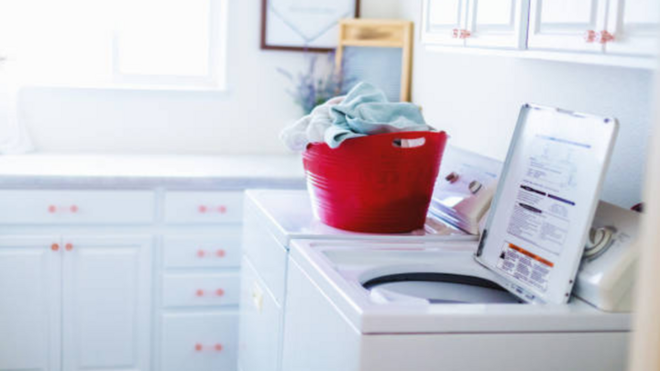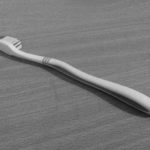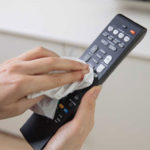Nowadays, almost every household has a washing machine, with some households even having two. Washing machines are highly varied, with options ranging from top-load to front-load, and their feature sets are constantly expanding.
Should you close the washing machine lid after finishing a load?
Washing machines help lighten our workload by cleaning and disinfecting bedding, clothing, etc. They are durable appliances, with many households using a single washing machine for up to 20 years. However, this longevity is dependent upon maintaining the machine through proper usage and care. If you know how to maintain it, not only will your washing machine last longer, but also it will rarely malfunction or break down—which means you won’t have to call a repairman very often.
One issue that many users wonder or worry about is whether or not they should close the washing machine lid after finishing a load. The answer is no, you should not.
After finishing a load, many people make a habit of closing the lid to prevent dust and insects from entering or simply to get it out of the way. However, this is not advisable. If space is limited and you cannot open the lid completely, ensure that it is at least partially open, allowing a small amount of air to circulate.
However, leaving the washing machine lid open at all times is also discouraged as external dust will accumulate in the drum, compromising hygiene. It is best to close the lid once the machine has completely dried after the wash cycle.
What are the consequences of closing the washing machine lid after finishing a load?
The internal environment of a washing machine is inherently sealed, and a front-load washing machine becomes even more sealed because the rubber gasket obstructs airflow. Therefore, closing the lid after washing can lead to various negative consequences.
Mold and mildew growth, affecting clothing
Mold and mildew thrive in humid, poorly ventilated, and unsanitary environments. Therefore, if you always close the lid of your washing machine after use, you are essentially creating an ideal environment for them to grow.
Additionally, mold and mildew that accumulate in the drum can cause clothes to develop a strong musty odor. Over time, these can manifest as tiny black dots on your clothing, which are notoriously difficult to remove once they have penetrated the fabric. In the long run, your clothes will suffer in both quality and appearance.
Reduced lifespan of washing machine
Bacteria and mold can easily form in the airtight environment created by the rubber gasket around the washing machine lid. This contamination will affect the water that is pumped into the machine, which in turn can impact the drainage system.
When mold and bacteria accumulate excessively, you may notice irregularities in the water and drainage system, such as foul odors or cloudy or dark-colored water. Therefore, if you do not clean your washing machine regularly and properly, you will reduce its lifespan.
Health implications
Mold and mildew can develop without being immediately visible to the naked eye and can contaminate the water used to wash clothes, which then adheres to the clothing. Together with environmental factors and weather conditions when drying clothes, this can have a direct impact on people’s skin, especially those with sensitive skin or allergies.
It can even affect the respiratory system, causing sinusitis, allergic rhinitis, etc. That is why you should not close the washing machine lid after finishing a load. Allow the machine to dry completely before closing it.

Should you close the washing machine lid after finishing a load? The answer is to leave it open until the machine is completely dry. (Photo: Istock)
How to prevent and eliminate mold and mildew
To keep your washing machine clean and minimize mold and mildew growth, in addition to not closing the lid after finishing a load, you should observe the following:
Remove clothes immediately after washing
One of the factors contributing to mold and mildew growth is leaving damp clothes in a sealed space. Therefore, hang or dry clothes as soon as the machine finishes its wash cycle.
Washing machines typically have a spin cycle included in their preset wash programs. However, to dry clothes faster and preserve the quality of the fabric, select the appropriate spin speed.
For thick items like towels or bed sheets, choose a strong spin speed to save time. For thin, delicate clothes, select a gentler spin speed to ensure adequate drying and preserve the fabric quality.
Choose the right location for your washing machine
To prolong the lifespan of your washing machine, avoid placing it in a humid environment. Also, ensure that it is placed on a flat surface to prevent water from leaking into the detergent dispenser or the drum from tilting and causing noise.
Prevent water from dripping onto the washing machine’s control panel and wipe it dry immediately if it does.
Use bleach to eliminate mold and mildew
If mold and mildew have already appeared in certain areas of the drum, use a mixture of warm water and bleach in a 10:1 ratio to wipe them down or run a wash cycle with this mixture. Repeat the cycle, but substitute the bleach with 2 cups of white vinegar to remove the bleach smell. Finally, run the cycle again with just hot water until the odor disappears.
Experts recommend following this procedure once a month to prevent mold and mildew from returning. Consider seeking professional assistance from washing machine cleaning services to ensure proper cleaning.
The internal environment of a washing machine, especially a front-load one, is sealed. Closing the lid traps moisture, creating a perfect breeding ground for mold and bacteria. By leaving the lid open, you allow air circulation, preventing the growth of contaminants and maintaining hygiene.
- Mold and mildew growth: These contaminants can affect the quality and appearance of your clothing, leaving tiny black dots that are difficult to remove. They also cause a musty odor.
- Reduced lifespan of the washing machine: Bacteria and mold can form in the airtight environment, affecting the water and drainage systems. This may lead to irregularities and damage over time.
- Health implications: Mold and mildew can contaminate the water used to wash clothes and then adhere to the clothing. This can affect people’s skin, especially those with sensitivities, and even impact the respiratory system.
- Remove clothes immediately after washing and dry them promptly. Leaving damp clothes in a sealed machine contributes to the growth of mold and mildew.
- Choose the right location for your washing machine. Avoid humid environments, and ensure it’s placed on a flat surface to prevent leaks and noise.
- Use bleach or vinegar to eliminate mold and mildew. If they’ve already appeared, use a mixture of warm water and bleach, then repeat with white vinegar to remove the bleach smell. Finally, run a hot water cycle to eliminate any odors.
- Consider seeking professional assistance from washing machine cleaning services for a thorough cleaning.
8 Common Mistakes People Make with Cutting Boards
Are you using your cutting board correctly? Many Vietnamese households rely on cutting boards in their kitchen, but not everyone knows how to use them properly, especially when it comes to wooden cutting boards. Check out these 8 mistakes to avoid when using a cutting board to ensure both hygiene and safety for everyone in your family.



































